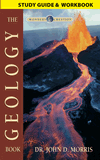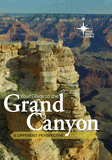Past Supercontinents
Moving Continents Exhibit
on October 31, 2016Some creationists have presented this model of how the earth’s continents may have looked in the past.
Rodinia
Most secular and biblical geologists believe that all the land has been together more than once. One of these supercontinents is called “Rodinia” (from the Russian word for “motherland”).
When God spoke the dry land into existence on Day 3 of Creation Week (Genesis 1:9–10), He may have created a landmass similar to Rodinia (scientists continue to debate its exact shape).
Dr. Kurt Wise believes that much of the area of the pre-Flood continents was covered in shallow oceans where invertebrate animals lived. A hot-water reef was located at the edge of the continents, while sand dunes were found along the beaches. (K. Wise, “The Hydrothermal Biome: a Pre-Flood Environment,” Proceedings of the Fifth International Conference on Creationism. Creation Science Fellowhip, 2003, pp. 359–370.)
Pangaea
The Flood began with a breakup of the “fountains of the great deep” and an opening of the “windows of heaven” (Genesis 7:11). This may have been the result of the breakup of the original supercontinent into huge plates of the earth’s crust. These plates split, moved, and collided throughout the duration of the Flood.
Evidence suggests that, after the breakup, the land again smashed together, forming another supercontinent called Pangaea. This temporary supercontinent formed and broke up entirely during the Flood.
Laurasia and Gondwana
Still during the Flood, Pangaea broke apart, first into Laurasia and Gondwana and finally into the continents we have today. At the end of this period, the Indian subcontinent slammed into the Eurasian plate, forming the Himalayas.
Related Media
Flood Initiation
Museum Guide
Are you exasperated by all the hype about "millions of years" in secular museums? The Museum Guide will help!
Browse Kids BookRecommended Resources
- © 2025 Answers in Genesis
- Privacy Policy
- Contact
- About




